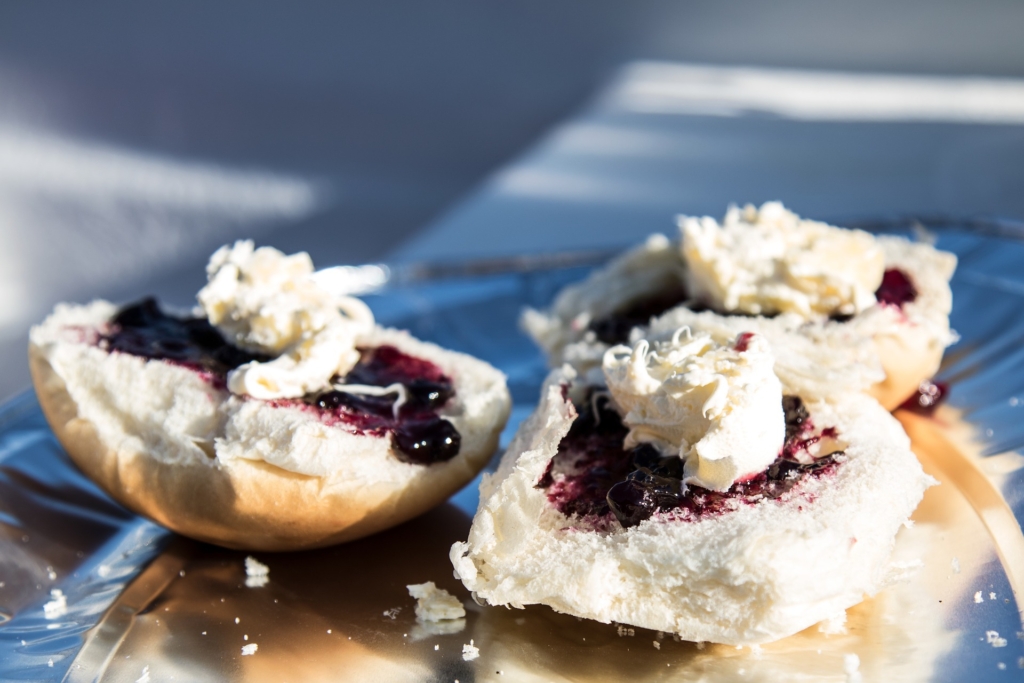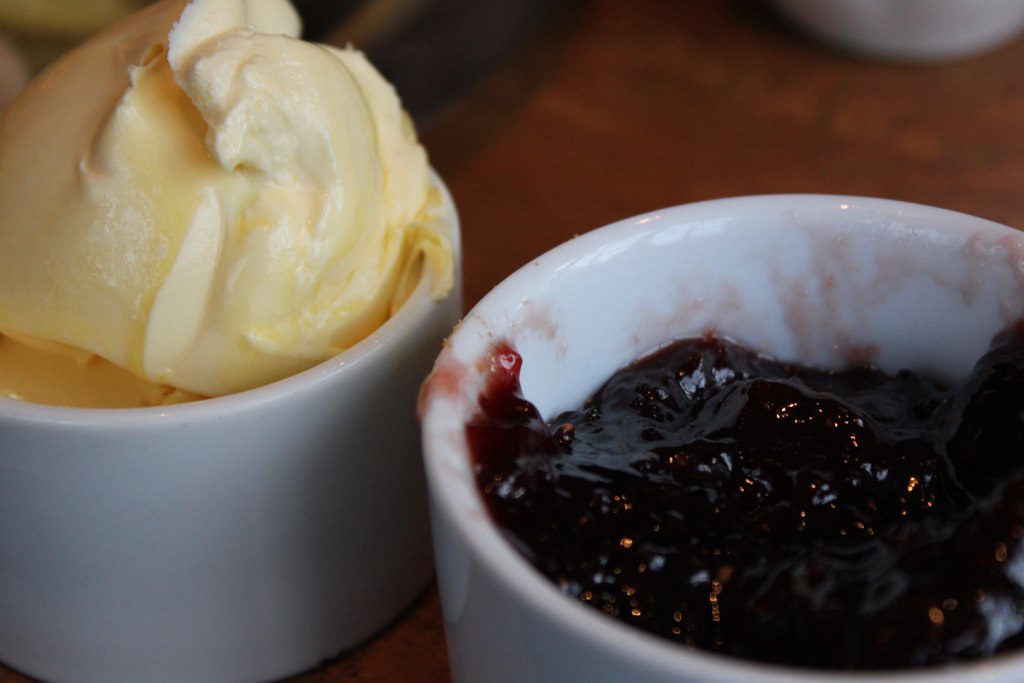Clotted cream is a traditional English breakfast alternative with a rich fat content and a nutty, creamy flavor.
History of Clotted Cream
Clotted cream dates back to old English days.The origin of clotted cream is a bit uncertain, but despite its occluded origins, its production is mostly associated with southwest England. Cornwall and Devon are the two counties most often associated with clotted cream. The famous Devon cream tea and the Cornish cream tea derive their names from these counties. Famously, in 1998, the term “Cornish Cream Tea” became a Protected Designation of Origin (PDO) by European Union directive. A cultural tradition in southwest England is to send tins of clotted cream to their friends and relatives in other parts of the British isles. Outside of England some deep-rooted clotted cream lineages can also be found in France and Ireland.

The Flavor of Clotted Cream
Clotted cream is made by gently heating heavy cream over a long period of time so that the whey separates from the fat. The fat solidifies on top of the container in which it is heated and is scraped off to be enjoyed as clotted cream. Clotted cream has a rich and nutty flavor with a creamy texture and subtle saltiness. For those who have never enjoyed clotted cream the taste falls somewhere between whipped cream and butter.
At its essence, clotted cream has a sour, nutty, and a slight buttery taste best enjoyed with sweet jams and enriched breads.
Health Benefits of Clotted Cream
With a minimum butterfat content of 55%, clotted cream is high in fat with a rich mouthfeel. While not advisable to enjoy copious quantities of clotted cream daily, it does possess a good amount of vitamins A, B12, and D, calcium, magnesium, protein, zinc and phosphorus.
Culinary Benefits of Clotted Cream

Where to start? Let’s start with the most famous culinary item for which clotted cream is used. The Devon Cream tea or the Cornish Cream tea is specifically made with clotted cream. Clotted cream is served with scones, tea, and jam. It is a delightful traditional Southwest English breakfast. Clotted cream is also used as an accompaniment in both hot and cold desserts. In Southwest England, clotted cream is used in the production of ice creams and fudge.
Clotted cream is also used in some savory dishes, namely risotto and egg dishes. Try stirring clotted cream into our Spring Risotto for added richness and flavor.
In India, clotted cream is known as malai. It is widely eaten for breakfast along with tea and bread. Malai sometimes is sprinkled with sugar to give it a sweet, nutty taste. Other culinary uses of clotted cream can be seen in meringues, caramel sauce, and also in clotted cream truffles.
Storage
Clotted cream should be kept in a sealed container and can be stored for up to two weeks. Clotted cream must remain refrigerated when not used or it will start to go bad. If properly refrigerated, clotted cream does last up to 14 days, but normally once opened it tastes best when consumed within 4 days.



